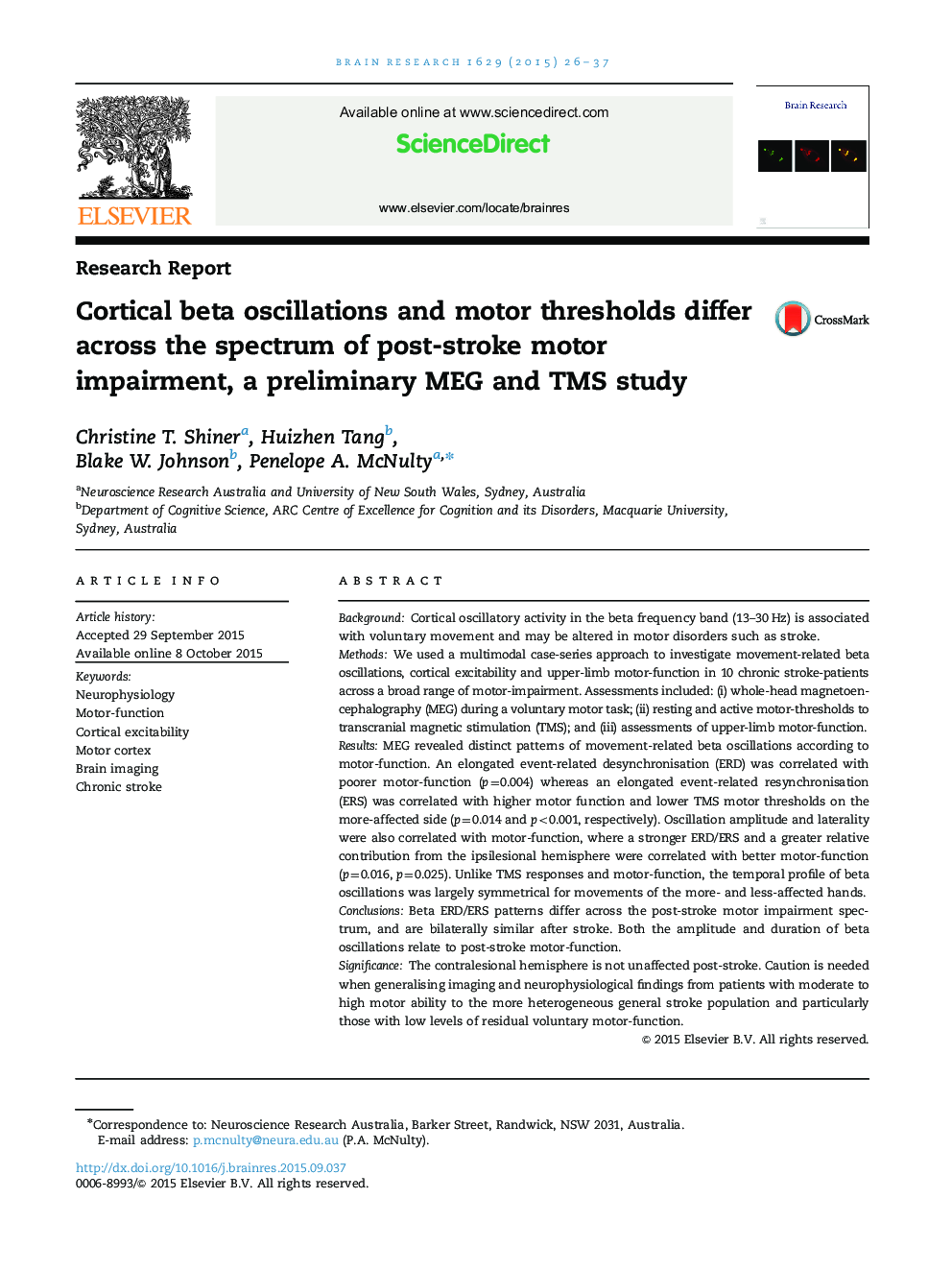| کد مقاله | کد نشریه | سال انتشار | مقاله انگلیسی | نسخه تمام متن |
|---|---|---|---|---|
| 6262781 | 1645516 | 2015 | 12 صفحه PDF | دانلود رایگان |

- Movement-related beta oscillations differ according to post-stroke motor impairment.
- Beta ERD/S duration and amplitude correlate with chronic motor-function post-stroke.
- Beta oscillation temporal patterns were largely symmetrical for all patients.
- Motor-function and motor thresholds were asymmetrical between sides.
- Beta ERS duration correlated with TMS thresholds on the more-affected side.
BackgroundCortical oscillatory activity in the beta frequency band (13-30Â Hz) is associated with voluntary movement and may be altered in motor disorders such as stroke.MethodsWe used a multimodal case-series approach to investigate movement-related beta oscillations, cortical excitability and upper-limb motor-function in 10 chronic stroke-patients across a broad range of motor-impairment. Assessments included: (i) whole-head magnetoencephalography (MEG) during a voluntary motor task; (ii) resting and active motor-thresholds to transcranial magnetic stimulation (TMS); and (iii) assessments of upper-limb motor-function.ResultsMEG revealed distinct patterns of movement-related beta oscillations according to motor-function. An elongated event-related desynchronisation (ERD) was correlated with poorer motor-function (p=0.004) whereas an elongated event-related resynchronisation (ERS) was correlated with higher motor function and lower TMS motor thresholds on the more-affected side (p=0.014 and p<0.001, respectively). Oscillation amplitude and laterality were also correlated with motor-function, where a stronger ERD/ERS and a greater relative contribution from the ipsilesional hemisphere were correlated with better motor-function (p=0.016, p=0.025). Unlike TMS responses and motor-function, the temporal profile of beta oscillations was largely symmetrical for movements of the more- and less-affected hands.ConclusionsBeta ERD/ERS patterns differ across the post-stroke motor impairment spectrum, and are bilaterally similar after stroke. Both the amplitude and duration of beta oscillations relate to post-stroke motor-function.SignificanceThe contralesional hemisphere is not unaffected post-stroke. Caution is needed when generalising imaging and neurophysiological findings from patients with moderate to high motor ability to the more heterogeneous general stroke population and particularly those with low levels of residual voluntary motor-function.
Journal: Brain Research - Volume 1629, 10 December 2015, Pages 26-37